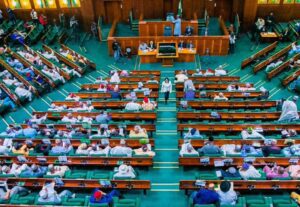
Insurance industry: Gross premium hit N1.003trn in Q4, 2023 – NAICOM
The Gross Premium Written of the Nigerian Insurance industry for the fourth quarter of 2023 stood at N1.003 trillion.
This represents about 27 percent growth compared to N790 billion recorded in 2022.
This was disclosed in the fourth quarter Insurance Industry’s Market Performance by the Statistics Department of the Directorate of Research, Statistics and Publications of the National Insurance Commission (NAICOM) on Tuesday in Lagos.
NAICOM said that the figure indicated a progressive trend of positive market performance at the close of the 2023 fourth quarter.
The commission stated that the insurance market recorded a total assets of N2.67 trillion and capitalisation of N851 billion in 2023.
According to NAICOM, the net claims posted by the industry is N669.4 billion, as non-Life segment contributed N329 billion, while Life segment recorded N340.4 billion.
The Commission said that non-Life business accounted for 61.3 percent of all premiums written during the year worth N615.1 billion, while the Life segment contributed 38.7 percent, valued at N388.1 billion.
The regulator noted that the market also recorded a retention of about 87.7 percent for the Life business and about 54 percent for Non-Life, while the aggregate market average retention stood at 66.7 percent in the period under review.
NAICOM revealed that the major growth drivers in the non-life segment of the market were Oil and Gas and Fire Insurances, contributing N167.8 billion, representing 27.3 percent and N148 billion, which indicated 24.1 percent of the total premium respectively.
Meanwhile, the industry posted Gross claims of N536.5 billion at the close of the fourth quarter, 2023, indicating total Non-Life business of N312.3 billion and Life business of N224.2 billion.
The market average stood at about 71.4 percent of the gross claims, while the net claims stood at N382.9 billion.
NAICOM noted that 95 percent of net claims were attributed to Life business, reflecting ongoing regulatory measures on claims settlement.
It further said that the “no-premium, no-cover” policy contributed to a decline in outstanding premiums, which accounted for 1.6 per cent of all premiums generated during the period




